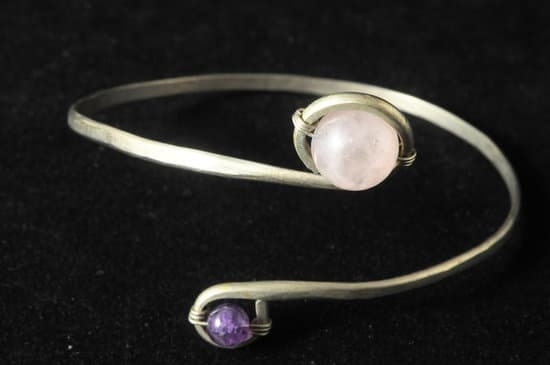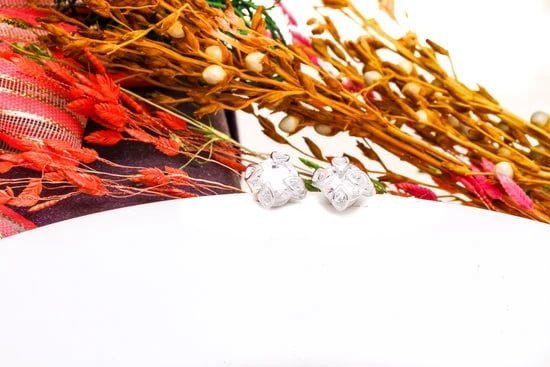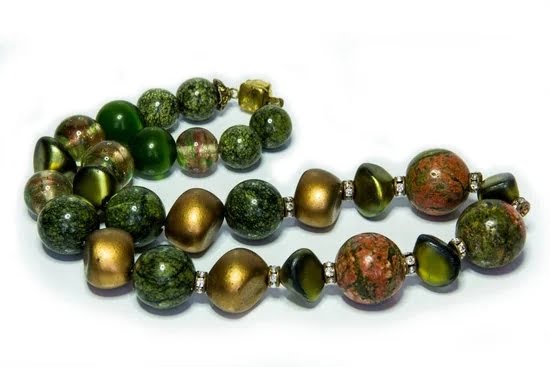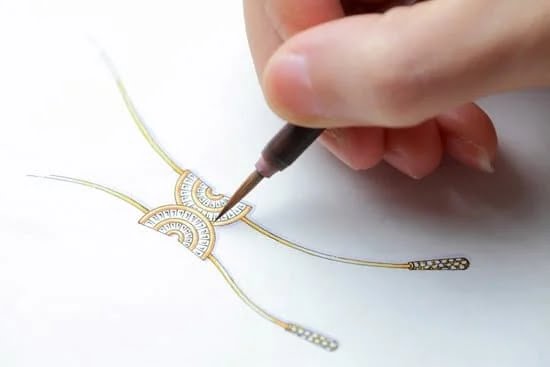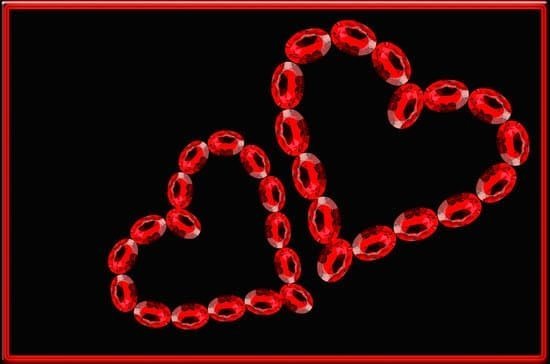A jewelry rolling mill is a machine used to reduce the thickness of sheet metal as well as change its shape, usually in order to create other pieces of jewelry. The rolling mill consists of two hard, polished metal rollers connected together mechanically and operated by manual, electric or robotic engines.
Regular maintenance and upkeep are essential for this vital piece of equipment to ensure that it works correctly and continues to be an efficient tool for fashioning custom jewelry pieces.
Mill Rollers
One important aspect of maintaining a jewelry rolling mill is regularly cleaning the rollers and ensuring they remain free from any dirt, dust or residue that can hinder performance. If any build-up is present on the rollers, it can cause damage to them over time which will put further strain on the machine itself and other components.
Pass the rollers through some thin oil prior to each use in order to lubricate them and keep them in optimal working condition. This will also help keep rust at bay since lubricated metals don’t succumb as quickly to corrosion when exposed to moisture.
Maintenance Tips
When not in use for extended periods, cover any open parts such as screw back plates with grease or wax paper which will help against moisture getting into the mechanisms of your machine. Ensure you inspect every moving part periodically such as screws, nuts, bolts and bearings and tighten any necessary after disassembly or repairs have been completed.
Make sure there are no obstructions blocking the free motion between both rollers in order for your workpiece to move uninterruptedly onto their surfaces during operation. Finally check if there are any worn surfaces where speed reduction could take place due to friction – if present carefully grind away any raised rims with a grinding wheel until it’s smoothened out once again.
To conclude, following simple steps like these when conducting periodic maintenance checks on your jewelry rolling mill can greatly prolong its life span while staving off costly repairs down the line. With just a few hours dedicate each year towards keeping your machinery in perfect working order you will get years worth of reliable use out of it without having to worry about unexpected breakdowns along the way.
Types of Jewelry Rolling Mills and Their Operation
Jewelry rolling mills come in a variety of configurations; some have flat rollers while others have wire rollers. The flat metallic surface of the rollers makes them ideal for crushing precious metals by compressing them, similar to how a rolling pin can be used to flatten dough. They are also used for flattening and thinning sheets of metal or for smoothing any bumps or warps that may be in the metal.
An adjustable thickness gauge allows operators to adjust the output size and thickness of the sheet being rolled as needed. The rolling mill should always be operated according to its instructions in order to ensure an even, consistent output free from defects.
When it comes to jewelry rolling mill maintenance, there are several steps that need to be taken in order to keep them functioning correctly and safely. Specifically, they need periodic lubrication in order to reduce wear on components and prolong its life span. For wire rollers, operators should use one part dry graphite powder with ten parts household petroleum jelly mixed together and applied generously onto the bearings and wires before operation.
It is recommended that the contents of this mixture be replaced every couple of months. Additionally, all moving parts should also be visually inspected for signs of corrosion, excessive wear or cracking prior to use.
Finally, it is important for users to make sure their rolling mills are kept clean at all times; otherwise dust particles could end up getting stuck between components leading towards greater wear as well as sparking hazards if these particles become trapped near electrical connections or power sources.
There are several ways rolling mills can be cleaned including using compressed air that has been filtered so as not cause any damage while removing dirt particles from tight spots operators cannot physically access with brushes or cloths alone.
Cleaning with water and soap is not recommended though; however, some manufacturers may offer cleaning solutions specifically designed with these tools in mind should it end up becoming necessary down the line.
Common Maintenance Tips for Jewelry Rolling Mills
The Jewelry rolling mill is a very useful tool in the jewelry maker’s arsenal of tools. However, the maintenance of a jewelry rolling mill can be essential to proper operation and long-lasting use. It is important that a rolling mill owner take the necessary steps to properly maintain their machine in order to ensure it continues to operate as desired. Proper maintenance will also help minimize the potential for unnecessary damage or misuse during its life expectancy.
It is important that your jewelry rolling mill be properly lubricated. Lubrication helps protect moving parts from friction and wear, and failure to do so could cause significant damage over time.
Make sure all lubricating points are clean and properly oiled with machine grade light oil on a regular basis; this should be done at least once a week, depending on use and environmental conditions. Also make sure your own hands are clean before handling any foreign objects within the machine as grease from fingertips can cause sticky buildup which may interfere with proper functioning of the machine.
Similarly, regular cleaning of both interior and exterior surfaces should take place when it comes to maintaining your milling machine. Special attention should be paid to removing dust particles and general dirt buildup as both mud work harden easily which could hamper performance and cause excessive force while milling metal pieces.
Exterior metal surfaces can easily corroded by moisture if not kept clean – utilize tools such as steel wool or special wire brushes designed specifically for cleaning metal parts in order to remove any oxidation or rust build-up if necessary. Additionally, replace worn out parts such as rollers when needed in order to ensure optimal performance of your jewelry rolling mill.
By taking these common maintenance tips into account, you can rest assured that your Jewelry Rolling Mill will continue operating efficiently for many years to come.
Pre-Use Preparation Guidelines for Jewelry Rolling Mills
Proper pre-use preparation of jewelry rolling mills is necessary to ensure that the machine is safe to operate and meets its functionality requirements. If the mill is not set up correctly or maintained properly, it can cause costly damage to both the machine and jewellery pieces being worked on. In addition, pre-use preparation also helps increase overall efficiency and reliability of the jewelry rolling mill.
At minimum each time a jewelry rolling mill is used it must be inspected, lubricated, and cleaned before use. Careful inspection should include all elements of the machine and its components such as gauges, screws, threads, bearings, etc. Tools needed for this task can commonly be found with the rolling mill itself or purchased at any hardware store. If any visible damage is present miners must contact service professionals for repair or replacement.
Regular lubrication is key when it comes to preserving performance and longevity of a jewelry rolling mill. All gears should be lubricated at least every 12 months but can vary based on circumstance such as usage frequency or environment in which roller is used.
All threaded parts should be regularly checked for wear from improper bolts size selection or excessive torque settings during adjustments; if these are present it may require replacing worn parts with larger threads sizes to accommodate proper alignment through out operation life span.
When lubing threads place small amounts of oil onto a rag/cotton swab and apply lightly as excess oil can cause too much friction which could lead to overheating or part deformation overtime due to thermal expansion/contraction rates within different materials themselves used during manufacture of hardware like rolling mills
Finally upon completion of all tasks listed above; ensure that the area surrounding machines are well cleaned (all materials removed) and secure by tightening all bolts/screws accordingly with torque wrench (if applicable). Making sure there’s nothing obstructing any points throughout equipment while running &ensuring that user know when too turn off/unplug power options once completed/needed as most importantly safety first rule always applies within machinery work settings that involve motion control elements or electricity sources.
Scheduled Maintenance Checklist for Jewelry Rolling Mills
The operation of a jewelry rolling mill requires regular maintenance in order to ensure that it runs smoothly and efficiently. Without performing routine upkeeps and repairs, potential breakdowns can occur that may lead to costly service calls or even cause irreparable damage to the equipment. Having a solid maintenance plan in place is essential for watching over the health of your rolling mill throughout the year.
Here is a checklist of the basic items that should be included in your jewelry rolling mill maintenance schedule on a yearly basis:
1)Clean and lubricate bearings. The bearings on the rollers must be cleaned and lubricated every year with oil to keep them from grinding during operation. Grease may also work if available, but oil is often recommended because it can more easily penetrate deep into the bearing internals. Make sure to wipe away any excess and check for signs of wear or damage while cleaning.
2) Inspect moving parts. Going beneath the machine, pay close attention to any moving parts such as gears, belts, or pulley systems. Tighten loose components, replace worn-out belts, or adjust tension levels where needed. Visually inspect all components as well in order to determine if they need repair or replacement before they cause further damage down the line.
3) Adjust pressure settings accordingly. Depending on what type of material you are working with, you may need to adjust the pressure settings of your rolling mill periodically so that it does not become overloaded during operation which could potentially cause damage to its components or make your material harder than desired when complete. Determining the proper setting can be done by running test pieces until you have created your desired result consistently without strain on the machine itself.
By taking extra time in regards to maintaining your jewelry rolling mill every year according to this checklist, you will be able to extend its lifespan as well as maximize its performance when at work along with preventing any downtime related issues that could arise through neglecting regular maintenance tasks.
What to Look for When Inspecting Jewelry Rolling Mills
Jewelry rolling mills are used to shape and finish metals or other materials using pressure alone. They come in a variety of sizes, and can be powered by electrical, gas or hand operated. To help maintain the efficiency, strength, and durability of any jewelry rolling mill, here are some key things to look for during inspection:
Checking the Wheels: Any flaws on the wheels can be dangerous and should be inspected with care. First check for any uneven surface wear or bent ends. This could cause them to break off when being used at maximum torque, leading to damage to the entire machine. Make sure that the wheels are properly lubricated–this will reduce heat accumulation during rolling operations and also give you a better roll quality.
Monitoring Vibrations: Regularly inspect the bearings for excessive vibration when running your jewelry rolling mill at maximum speed. Bearings that experience abrasion over time need to be changed out as soon as possible; if ignored it could cause serious damage to your machine. If your bearings run smoothly then there is no need to take action; however if any variations occur it is best practice to take note in order to further diagnose where the problem may originate from.
Safety Checks: Always make sure that jewelry rolling mills come with safety features that meet industry standards, such as an emergency stop switch which will allow you quickly shut off the machine in case of a mishap.
Additionally doing regular maintenance checks on these machines will ensure they don’t have any unseen problems or faults with them, additionally checking if all parts are stable when running so there won’t be any unexpected issues while using them regularly in production or craftwork settings.
Cleanliness: Finally make sure that your jewelry rolling mills comply with healthcare guidelines regarding cleanliness and hygiene; this includes inspecting electrical components for rust accumulation which can increase chances of fire hazards if not dealt with promptly. Moreover washing out any oil/water mixture build up within the wheels will reduce sticking surfaces due its moistures retention qualities hence keeping more uniform product result throughout its use.
Troubleshooting Tips for Jewelry Rolling Mills
It is essential to maintain your jewelry rolling mill in order to keep it running at its peak performance. Regularly cleaning the rollers and replacing the oil is a must, but there are also some troubleshooting tips you can use if you start to experience problems. To begin, it’s important to understand how your mill works – that way you can identify the cause of the malfunction.
When troubleshooting issues, it’s important to keep in mind that the rollers designed for use with a rolling mill are made from softer metals and various other materials so that they can be rolled out more easily than other types of metal. The heat generated by friction from spinning the rollers causes these softer metals and materials to expand slightly and then contract back when cooled.
This can cause a problem over time as materials become stuck in between the rollers causing them to grind against each other or become misaligned altogether. This is why regular maintenance such as oiling and cleaning is important – it helps prevent these issues from arising in the first place.
If you find yourself facing one of those common issues related to your roller, there are a couple of different ways you can fix them fairly simply without having to purchase additional parts or tools.
If your rollers seem to be sticking together due to foreign material buildup, try using cleaning agents such as baking soda or cornstarch followed by using oil on both ends of each roller until the material has been released or broken up enough for proper operation again.
You may also need to apply force with a small hammer or punch in order loosen any streaks that have become lodged in between individual rolls. Lastly, make sure your practice safe bench procedures while performing these tasks; wear safety glasses and keep any body parts away from moving parts at all times.
When to Bring in a Professional for Jewelry Rolling Mill Maintenance
When it comes to jewelry rolling mill maintenance, it is important to have a professional regularly inspect and service the machine. Whether you are just getting started with setting up a rolling mill for your business or you have years of experience with this type of machine, there are certain points when it is best to bring in professional help.
This helps ensure that the parts are running well and that the overall condition of the machine remains in top shape so that you can continue producing intricate and high-quality pieces of jewelry.
First, it’s important to make sure that all of the components on the rolling mill are lubricated properly. This helps ensure that they move smoothly while still being durable enough to produce jewelry items with precision. Proper lubrication also helps reduce the noise that comes from the operation of the machine.
Additionally, some components may be prone to breakdowns if they become overheated due to high levels of friction or lack of proper lubrication. A professional should be consulted regularly in order to determine if any action needs to be taken in order to prevent this from occurring.
Second, every few months, you should also have a professional come in and check out all of the electrical components on your jewelry rolling mill-like wiring, switches, motors and bearings – in order to make sure everything is running as smoothly as possible. Any problems found during this inspection can then be addressed immediately so that your machinery continues operating safely and efficiently for many years ahead.
Finally, if any major repairs need to occur at any point due an issue with any part on your jewelry rolling mill, then it is essential that you call in a qualified technician who can assess the damage effectively diagnose how best to go about making a repair without interrupting production operations too much. It is likely they will source or form new parts based on their expertise which ensures your machinery continues working properly after maintenance has completed successfully.
Tips for Properly Storing Jewelry Rolling Mills
Maintaining a jewelry rolling mill is an essential part of any jewelry-making process. Although it can be tedious and time-consuming to complete, proper maintenance ensures that your rolling mill is as efficient as possible for years to come. The following are some tips for properly storing a jewelry rolling mill:
First off, it’s important to place the rolling mill in a secure location away from any moisture or other damaging elements such as direct sunlight. This forbids any wear and tear to form on the material or the body of the rolling mill prematurely, ensuring a longer life span.
Rolling mills should also never be laid directly onto bare surfaces to avoid them being scratched or damaged in any way. Instead, one should place additional padding between it and whatever surface it lays upon to protect both items from harm.
Another factor when storing jewelry rolling mills is keeping it clean. This means removing extra dust, grease or debris regularly so no dirt accumulates inside the machine itself. In addition, one should make sure that all tools are moved away from the machine during storage and between uses. It’s also important to check over the gears and wheels with an oiled cloth every once in a while and add lubrication if necessary.
Finally, double checking that safety measures are met is just as important for both store personnel and customers when working with a rolling mill. Always make sure that both openings at the top of the machine are closed securely together before using or moving your rollers around and use extra caution moving larger pieces of metal between jobsite areas.
Making sure you have warranties intact against extreme damages in case of sudden malfunctions is also recommended in order to keep operations running with minimal disruptions along the way.
Safety Practices When Working with Jewelry Rolling Mills
It is important to practice good safety when working with jewelry rolling mills. Matters of personal health and the equipment must be taken into consideration when handling any machinery. Keep yourself safe at all times by following basic safety rules.
First, be sure to read and follow any operational manuals and warnings provided with your machine. Make note of any hazards associated with it before you begin operating it. Always inspect your mill for any visual signs of damage such as loose wires or worn-out components.
Ensure everything is tightened or replaced as necessary prior to operation. Additionally, always wear protective clothing such as goggles and gloves when operating a rolling mill, so as to ensure your hands are protected from sharp burrs/edges that arise from workpieces as well as preventing other potential burns or cuts resulting from the machine’s operations.
In order to keep your rolling mill in optimal running condition, regular maintenance is vital to its longevity. This can be done either manually with lubricating oil and cleaning solutions, or through automated systems like automatic chain lubrication systems which will prevent further damages over time along with providing cost savings by increasing the life of certain parts.
Additionally, another way to promote a longer life cycle for your mill is keeping dust away from electrical items within the rolling mill machine such as bearings, gears and pulleys – unfortunately this can accumulate over time leading to diminished performance if not thoroughly cleaned regularly enough.
Check regularly that all fasteners and components are firmly held in place so they may not become loose during operation causing unforeseen downtime or possibly even an accident. Assemblies should also be periodically inspected for subtle movement too; if found then the mechanisms must duly be re-tightened without fail in order for proper functioning of the entire system/machine going forwards from thereon in.
While using a jewelry rolling mill there are many things that need consider regarding safety precautions, making sure you do routine maintenance all helps you maintain the longevity of a successful investment into this type of machinery. With all these tips in mind, you should be equipped and ready to enjoy an effective outcome while safely utilizing your own jewelry rolling mill.
Conclusion
Maintaining a jewelry rolling mill is an important part of keeping it in tip-top shape. Proper maintenance will ensure greater productivity and longer life of the mill. Regularly lubricating and inspecting the rollers and adjusting the settings according to the user’s needs will help keep the mill running optimally.
Additionally, having a good cleaning routine and keeping up with preventive maintenance should be part of any jewelry rolling miller’s routine. It is also essential that users learn about their particular model of jewelry rolling mill, as some models require different maintenance procedures than others.
The daily upkeep of the jeweler’s rolling mill is important for ensuring peak performance from its various components. After each work session, it is wise to give all parts a thorough cleaning to remove any dust or debris buildup between use. Additionally, if there are any damaged or broken parts they should be replaced before continuing to use the machine.
Additionally, it is advisable to inspect the rollers regularly to check for signs of wear-and-tear, accumulation of debris or corrosion. As needed, spare parts can be greased or oiled for long-term protection against rust and corrosion caused by use over time.
Finally, one of the best ways to ensure optimal performance from a jewelry rolling mill is through regular preventive maintenance sessions. Such situations involve taking apart specific machinery components and thoroughly inspecting them for signs of damage,.
In addition to checking for external damage, it’s also important to make sure that internal mechanisms are intact and functioning properly as well as scheduling routine oil changes and cleaning regimens for long term storage prevention on those items contaminated by metals causing gradual deterioration over time such as zinc plated hardware.
By taking the time to pay attention these details you can drastically lengthen your jewelry rolling mill’s life span while ultimately maintaining higher levels of production efficiency compared to proper not doing so in order meets day by day demand results due necessity often neglected in these scenarios.

Welcome to my jewelry blog! My name is Sarah and I am the owner of this blog.
I love making jewelry and sharing my creations with others.
So whether you’re someone who loves wearing jewelry yourself or simply enjoys learning about it, be sure to check out my blog for insightful posts on everything related to this exciting topic!

